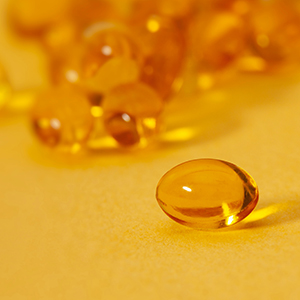Vitamin D and tuberculosis in children: a role in the prevention or treatment of the disease?

Submitted: October 9, 2021
Accepted: March 24, 2022
Published: March 30, 2022
Accepted: March 24, 2022
Abstract Views: 2185
PDF: 972
Publisher's note
All claims expressed in this article are solely those of the authors and do not necessarily represent those of their affiliated organizations, or those of the publisher, the editors and the reviewers. Any product that may be evaluated in this article or claim that may be made by its manufacturer is not guaranteed or endorsed by the publisher.
All claims expressed in this article are solely those of the authors and do not necessarily represent those of their affiliated organizations, or those of the publisher, the editors and the reviewers. Any product that may be evaluated in this article or claim that may be made by its manufacturer is not guaranteed or endorsed by the publisher.
Similar Articles
- Pierfranco Terrosu, Aspirin use for primary prevention in elderly patients , Monaldi Archives for Chest Disease: Vol. 84 No. 1-2 (2015): Cardiac series
- Roberto F.E. Pedretti, Francesco Fattirolli, Raffaele Griffo, Marco Ambrosetti, Elisabetta Angelino, Silvia Brazzo, Ugo Corrà , Nicolò Dasseni, Pompilio Faggiano, Giuseppe Favretto, Oreste Febo, Marina Ferrari, Francesco Giallauria, Cesare Greco, Manuela Iannucci, Maria Teresa La Rovere, Mario Mallardo, Antonio Mazza, Massimo Piepoli, Carmine Riccio, Simonetta Scalvini, Luigi Tavazzi, Pier Luigi Temporelli, Gian Francesco Mureddu, Cardiac Prevention and Rehabilitation “3.0â€: From acute to chronic phase. Position Paper of the ltalian Association for Cardiovascular Prevention and Rehabilitation (GICR-IACPR) , Monaldi Archives for Chest Disease: Vol. 88 No. 3 (2018)
- S.M. Mirsaeidi, P. Tabarsi, M.O. Edrissian, M. Amiri, P. Farnia, S.D. Mansouri, M.R. Masjedi, A.A. Velayati, Primary multi-drug resistant tuberculosis presented as lymphadenitis in a patient without HIV infection , Monaldi Archives for Chest Disease: Vol. 61 No. 4 (2004): Pulmonary series
- Marzia Vassalini, Andrea Verzeletti, Francesco De Ferrari, Standard of care and guidelines in prevention and diagnosis of venous thromboembolism: medico-legal implications , Monaldi Archives for Chest Disease: Vol. 84 No. 1-2 (2015): Cardiac series
- S.M. Mirsaeidi, P. Tabarsi, A. Mardanloo, G. Ebrahimi, M. Amiri, P. Farnia, M. Sheikhleslami, V. Bakayev, F. Mohammadi, S.D. Mansouri, M.R. Masjedi, A.A. Velayati, Pulmonary Mycobacterium Simiae infection and HTLV1 infection: an incidental co-infection or a predisposing factor? , Monaldi Archives for Chest Disease: Vol. 65 No. 2 (2006): Pulmonary series
- Marinella Sommaruga, Elisabetta Angelino, Paola Della Porta, Mara Abatello, Giacomo Baiardo, Gianluigi Balestroni, Ornella Bettinardi, Edward Callus, Chiara Ciracì, Ombretta Omodeo, Claudia Rizza, Paolo Michielin, Marco Ambrosetti, Raffaele Griffo, Roberto F.E. Pedretti, Antonia Pierobon, Best practice in psychological activities in cardiovascular prevention and rehabilitation: Position Paper , Monaldi Archives for Chest Disease: Vol. 88 No. 2 (2018)
- A.A. Velayati, P. Farnia, M.R. Boloorsaze, M.F. Sheikholslami, S. Khalilzadeh, S.S. Hakeeme, M.R. Masjedi, Mycobacterium Bovis infection in children in the same family: transmission through inhalation , Monaldi Archives for Chest Disease: Vol. 67 No. 3 (2007): Pulmonary series
- Kiran B, Rupak Singla, Neeta Singla, Vinay V, Kuljeet Singh, Madhumita Paul Choudhury, Nilotpal Bhattacherjee, Factors affecting the treatment outcome of injection based shorter MDR-TB regimen at a referral centre in India , Monaldi Archives for Chest Disease: Vol. 93 No. 3 (2023)
- A.E. Erbaycu, Z. Taymaz, F. Tuksavul, A. Afrashi, S.Z. Güçlü, What happens when oral tuberculosis is not treated? , Monaldi Archives for Chest Disease: Vol. 67 No. 2 (2007): Pulmonary series
- A. Kaya, Z. Topu, S. Fitoz, N. Numanoglu, Pulmonary tuberculosis with multifocal skeletal involvement , Monaldi Archives for Chest Disease: Vol. 61 No. 2 (2004): Pulmonary series
You may also start an advanced similarity search for this article.

 https://doi.org/10.4081/monaldi.2022.2112
https://doi.org/10.4081/monaldi.2022.2112





